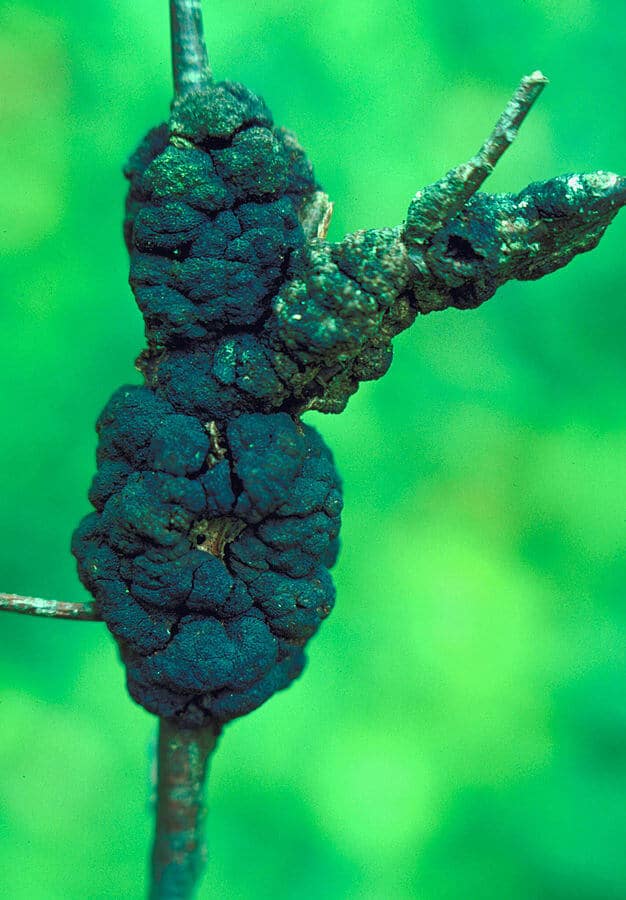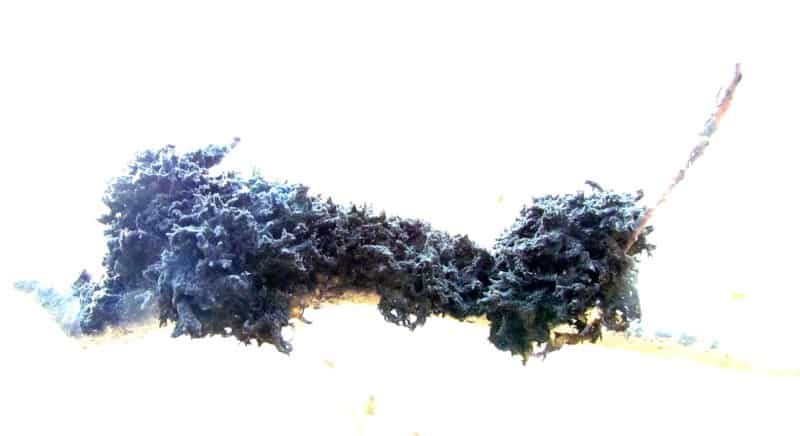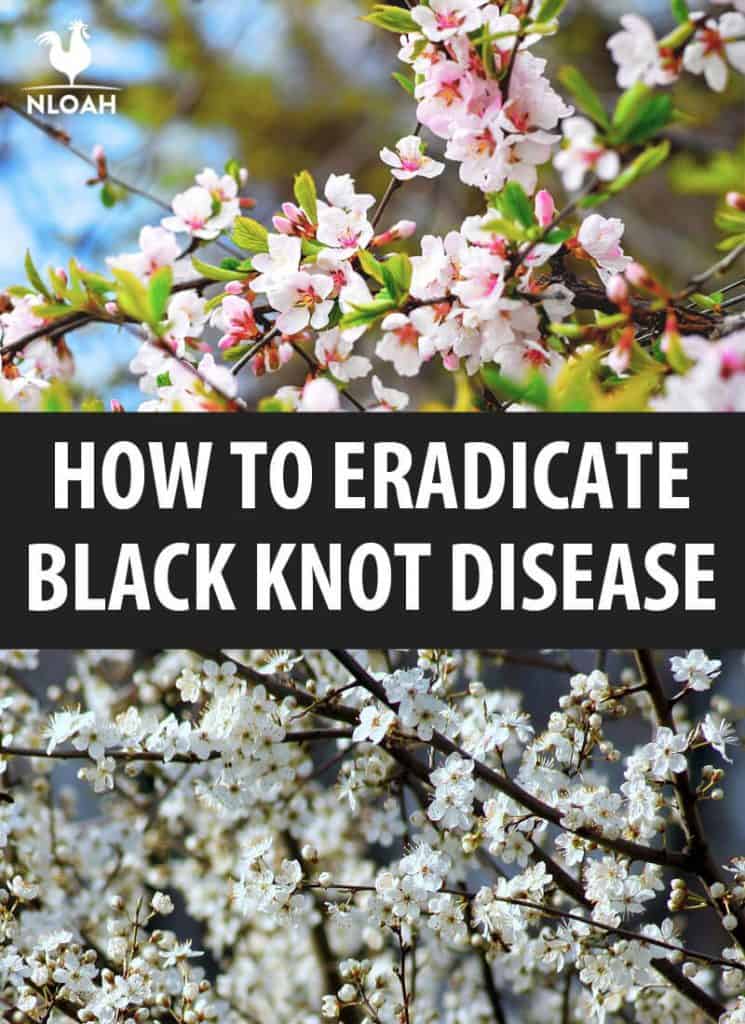Black knot is an all too common fungal disease that afflicts fruit trees, and various types of ornamental trees – especially varieties of cherry and plum trees. The fungus causes black tumor-style growths, or black galls, to grow on not only the branches, but sometimes on the trunks of the tree as well.
Some trees can survive a black knot infestation without ill effects on fruit production, but in my personal experience, such instances are rare. Tree that prove to be typically intolerant to severe black knot infestations typically lose leaves, see their shoots wilts, and the death of branches where the black galls form.
How quickly you are able to detect and treat a black knot infestation will play a substantial role in both the length and extent of recovery the fruit-producing tree will experience. The powerful fungal spores travel through one infected tree and can leach onto to other trees nearby, as well. A black knot infection is perfectly capable of rapidly wiping out an entire fruit grove during a single season.

Signs Of Black Knot On Branches
- Black knots usually become increasingly noticeable during the fall and winter months, after the tree has been harvested and sheds its leaves.
- The black tumors tend to grow along the length of branches and stems.
- During the first weeks of summer, black knots will begin to appear on the edges of existing galls and/or on areas of new tree growth.
- New black knots first appear to look velvet in texture and are covered in spores that are olive drab in color.
- By the end of the summer months, the new galls will have turned black.
- Branches that are infected with black knots generally bend to one side to compensate for the added weight of the black knots.
- An infected tree could present with only a couple of black knot growths – or a few hundred.
Signs Of Black Knots On Leaves
- At first, even when a tree branch is infested with black knots, the leaves often still remain green and healthy in appearance.
- Eventually, the leaves on trees that are suffering a severe black knot infestation or are on trees that are substantially susceptible to this type of fungus, will wilt, and then turn brown before they die off prematurely.
- The wilting leaves most often first appear on the end of branches afflicted with black galls.
Signs of Black Knots On Tree Trunks
- Black knots on tree trunks typically crack open at least slightly, and drip a sticky fluid that is akin to a thin syrup.
- The bark on the afflicted tree trunk typically swells and turns particularly rough in texture.
- Rotting of the tree trunk due to the decaying wood that is infested by the black knot fungus, is also common.
Other Signs Of A Black Knot Infestation To Be On The Lookout For
- Dark and water soaked lesions on the fruit, stem, or leaves. The center of these lesions will eventually become polluted with pink spores.
- The development of uneven black knot spores growing just beneath thin and moist film under the bark.
- The galls often start growing here among where the new leaf growth.
- Look on the under and back sides of leaves where the black knot fungus prefers to hide while it kills. If you can catch the fungus in this infant state, a simple pruning might save the tree before it is forced to battle the infestation further.
- Look on the sides and underbelly of branches. Black knots will not only form in visible areas, but overtake the entire branch by wrapping around its girth.
- Inspect small twigs and leaf axils regularly for signs of swelling, cracking, or discoloration.
- Black knot grows ever quicker when it is allowed to survive one growing season – and allowed to release more contagious gall spores into your fruit grove.
- The spores from black knot tumors usually grow quicker when the average daytime temperature ranges in-between 75 to 85 degrees F (24 C to 30C), especially in moist weather.

How To Prevent Black Knot
- One of the best prevention steps you could take to thwart black knot is buying only seeds or tree starts that were cultivated in the western United States. Seeds and starts from this region will most likely never have been exposed to this type of fungal spore.
- Never, ever, save any seeds or prune new starts from a tree that has only experienced a mild black knot infestation.
- Thoroughly disinfect all pruning and gardening tools after each use.
- Always collect and remove garden debris after the harvest to get rid of any lingering black knot spores.
- Keep the growing area free of debris, and trim the area tightly to prevent spores from attaching to weeds and grass, and being transported to other areas of your homestead via foot traffic, hoof traffic, or equipment use.
- Use a neem oil based agriculture spray weekly to deter the black knot fungus from being able to live on or in the vicinity of the tree.
- Cut out black knots during the winter because their spore production is at it lowest point during the time of the year.
- Cut about 4 to 8 inches below or before the black knot galls to help ensure you have removed the entire growth and its fungus spores. When I encounter black knot on a branch, I always have the entire branch meet the business end of a chainsaw just to make certain no lingering fungal spores are left.
- Neem oil based sprays used once a week can help prevent black knot infestations.
- Both sulfur based and copper based agriculture powders can also be broadcast on and around the tree to curtail black knot growth. It’s best to treat the trees with the powders during the early weeks of spring before the temperature rises, and causes the spores to reproduce more quickly.
- You can also treat seeds and starts with the powders noted above as a preventative measure before putting them into the ground.
There’s no one sure fire way to prevent black rot. Treating the fruit trees and diligently inspecting them at least twice a week will help you bolster the chances that the fruit producing trees on your homestead will protected against this highly destructive fungus.


Tara lives on a 56 acres farm in the Appalachian Mountains, where she faces homesteading and farming challenges every single day, raising chickens, goats, horses, and tons of vegetables. She’s an expert in all sorts of homesteading skills such as hide tanning, doll making, tree tapping, and many more.

I inherited two Damson trees when I bought my bungalow. We’ve never had any fruit and now I notice there is black knot all the way down the trunks and they have split open. Should I have the them cut down. I think they can’t be saved
I just found black knots on my sour cherry tree. I didn’t know what it was or that I should look for it, so I am a bit late in the season to be dealing with it. I want to save the tree! Would it be better to wait until the winter to trim the black knots off, or should I do it now? I don’t know if it’s worse to cut it mid-season when the spores could spread more easily, or wait until the winter and let the fungus keep growing for many months.